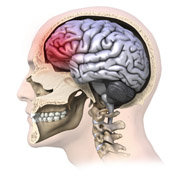Brain, Biology and Behavior, Center for
Date of this Version
4-1-2014
Document Type
Article
Citation
2014 Mary Ann Liebert, Inc. Used by permission.
Abstract
Comprehension of narrative stories plays an important role in the development of language skills. In this study, we compared brain activity elicited by a passive-listening version and an active-response (AR) version of a narrative comprehension task by using independent component (IC) analysis on functional magnetic resonance imaging data from 21 adolescents (ages 14–18 years). Furthermore, we explored differences in functional network connectivity engaged by two versions of the task and investigated the relationship between the online response time and the strength of connectivity between each pair of ICs. Despite similar brain region involvements in auditory, temporoparietal, and frontoparietal language networks for both versions, the AR version engages some additional network elements including the left dorsolateral prefrontal, anterior cingulate, and sensorimotor networks. These additional involvements are likely associated with working memory and maintenance of attention, which can be attributed to the differences in cognitive strategic aspects of the two versions. We found significant positive correlation between the online response time and the strength of connectivity between an IC in left inferior frontal region and an IC in sensorimotor region. An explanation for this finding is that longer reaction time indicates stronger connection between the frontal and sensorimotor networks caused by increased activation in adolescents who require more effort to complete the task.
Included in
Behavior and Behavior Mechanisms Commons, Nervous System Commons, Other Analytical, Diagnostic and Therapeutic Techniques and Equipment Commons, Other Neuroscience and Neurobiology Commons, Other Psychiatry and Psychology Commons, Rehabilitation and Therapy Commons, Sports Sciences Commons


Comments
doi: 10.1089/brain.2013.0190 Volume 4, Number 4, 2014